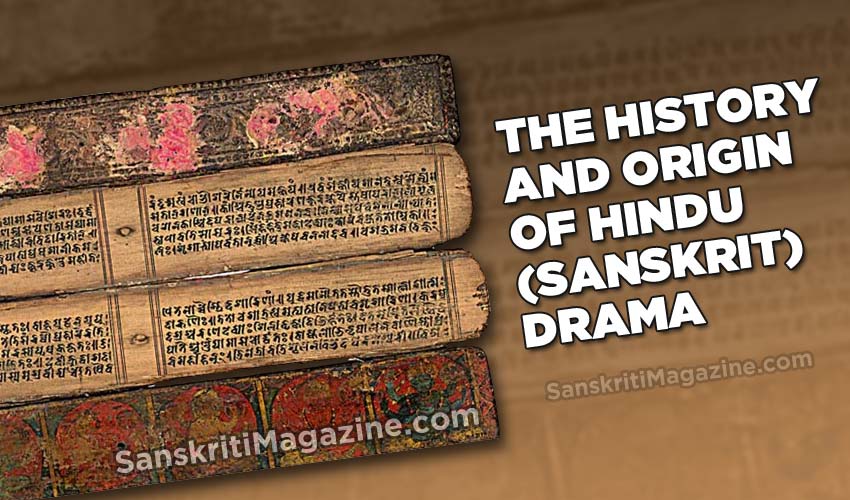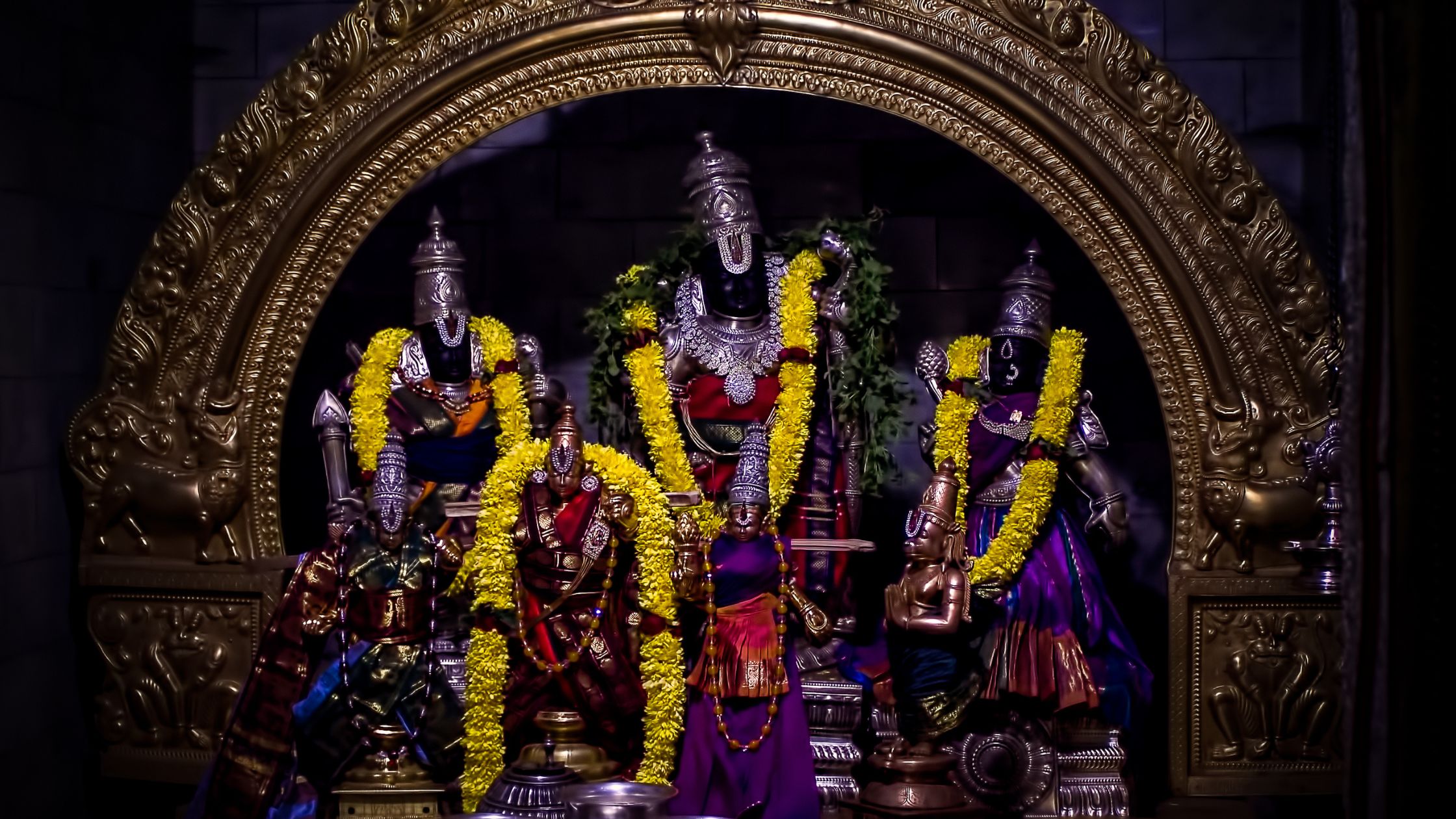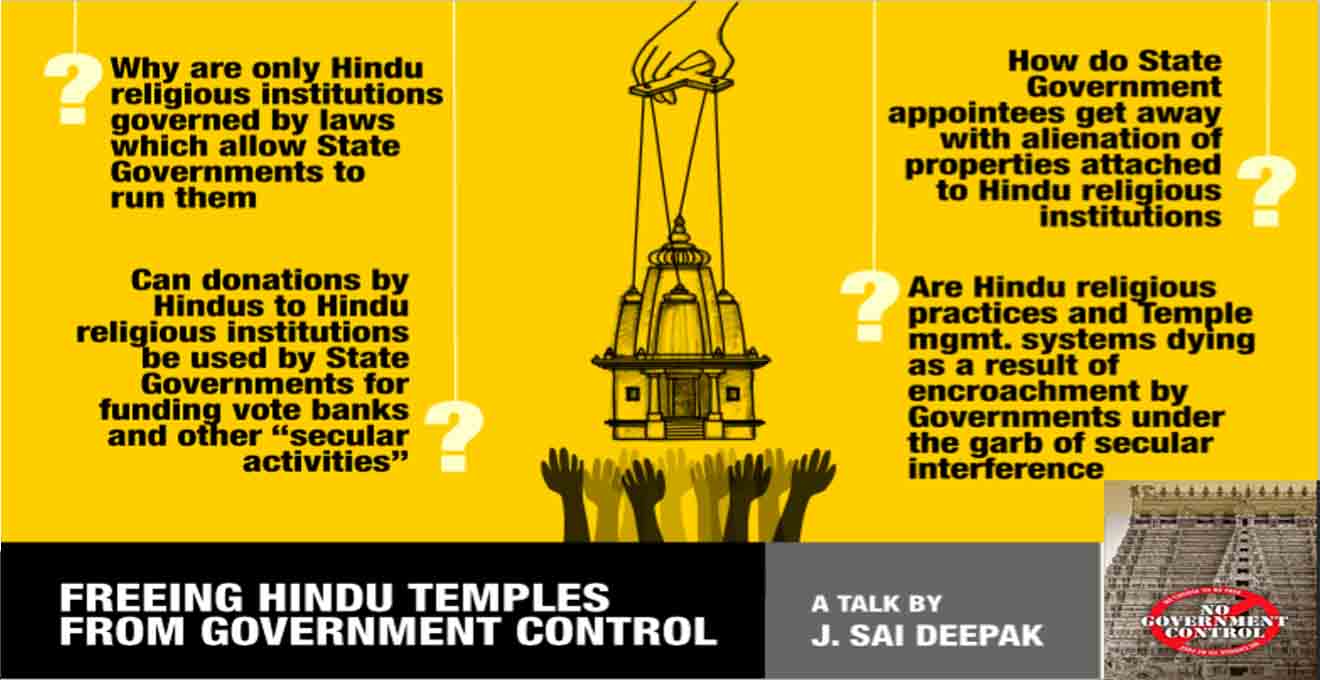Among the various sorts of literary composition the drama holds the most important position; for it is a picture of real life, and, as such, of national interest. It consists of two principal species, tragedy and comedy; the minor species are tragi-comedy, farce, burlesque and melodrama. Both tragedy and comedy attained their perfection in Greece long before the Christian era. There it originated in the worship of Bacchus.
The English drama took its rise from the mysteries or sacred plays by the medium of which the clergy in the Middle Ages endeavored to impart a knowledge of the Christian religion.
The Sanskrit drama is said to have been invented by the sage Bharata, who lived at a very remote period of Indian history and was the author of a system of music. The earliest references to the acted drama are to be found in the Mahabhashya, which mentions representations of the Kansabadha and the Balibadha, episodes in the history of Krishna. Indian tradition describes Bharat as having caused to be acted before the gods a play representing the Svayamvara of Lakshmi.
Tradition further makes Krishna and his cowherdesses the starting point of the Sangita, a representation consisting of a mixture of song, music, and dancing. The Gitagovinda is concerned with Krishna, and the modern Yatras generally represent scenes from the life of that deity.
From all this it seems likely that the Hindu drama was developed in connection with the cult ofVishnu-Krishna; and that the earliest acted representations were, therefore, like the mysteries of the Christian Middle Ages, a kind of religious plays, in which scenes from the legends of the gods were enacted mainly with the aid of songs and dances supplemented with prose dialogues improvised by the performers. These earliest forms of Hindu dramatic literature are represented by those hymns of the Rig-Veda which contain dialogues such as those of Sarama and the Panis, Yama and Yami, Pururava and Urvaci.
The words for actor (nata) and play (nataka) are derived from the verb nat, the Prakrit or vernacular form of the Sanskrit nrit, “to dance.” Hence scholars are of opinion that the Sanskrit drama has developed out of dancing. The representations of dramas of early times were attended with dancing and gesticulation. There were rude performances without the contrivances of stage and scenic arrangements, dancing and music forming a considerable part. The addition of dialogue was the last step in the development, which was thus much the same in India and Greece. This primitive stage is represented by the Bengal Yaêras and the Gitagovinda. These form the transition to the fully developed Sanskrit play in which lyrics and dialogues are blended.
Sakuntala belongs to the mytho-pastoral class of Sanskrit plays; Probodhchandraudya, to the metaphysical. The Hindu theater affords examples of the drama of domestic, as well as of heroic life; of original invention as well as of legendary tradition.
The Hindus did not borrow their dramatic compositions from foreigners. The nations of Europe possessed no dramatic literature before the fourteenth or fifteenth century, at which period the Hindu drama had passed into its decline. Mohammedan literature has ever been a stranger to theatrical writings, and the Mussalman conquerors of India could not have communicated what they never possessed. There is no record that theatrical entertainments were ever naturalized among the ancient Persians, Arabs, or Egyptians. With the exception of a few features in common with the Greek and the Chinese dramas, which could not fail to occur independently, the Hindu dramas present characteristic features in conduct and construction which strongly evidence both original design and national development.
Angustus William Von Schlegel observes:—
“Among the Indians, the people from whom perhaps all the cultivation of the human race has been derived, plays were known long before they could have experienced any foreign influence.”
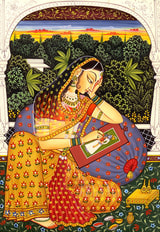
The Character of the Hindu Drama
Sanskrit plays are full of lyrical passages describing scenes or persons presented to view, or containing reflections suggested by the incidents that occur. They usually consist of four-line stanzas. The prose of the dialogue in the plays is often very commonplace, serving only as an introduction to the lofty sentiment of the poetry that follows.
The Sanskrit drama is a mixed composition in which joy is mingled with sorrow, in which the jester usually plays a prominent part, while the hero and heroine are often in the depths of despair. But it never has a sad ending. The emotions of terror, grief, or pity, with which the audience are inspired, are therefore always tranquillised by the happy termination of the story. Nor may any deeply tragic incident take place in the course of the play; for death is never allowed to be represented on the stage. Indeed, nothing considered indecorous, whether of a serious or comic character, is allowed to be enacted in the sight or hearing of the spectators, such as the utterance of a curse, degradation, banishment, national calamity, biting, scratching, kissing, eating, or sleeping.
Love, according to Hindu notions, is the subject of most of their dramas. The hero, who is generally a king, and already the husband of a wife or wives, is suddenly smitten with the charms of a lovely woman, sometimes a nymph, or, as in the case of Sakuntala, the daughter of a nymph by a mortal father. The heroine is required to be equally impressible, and the first tender glance from the hero’s eye reaches her heart. With true feminine delicacy, however, she locks the secret of her passion in her own breast, and by her coyness and reserve keeps her lover for a long period in the agonies of suspense. The hero, being reduced to a proper state of desperation, is harassed by other difficulties. Either the celestial nature of the nymph is in the way of their union, or he doubts the legality of the match, or he fears his own unworthiness, or he is hampered by the angry jealousy of a previous wife. In short, doubts, obstacles and delays make great havoc of both hero and heroine. They give way to melancholy, indulge in amorous rhapsodies, and become very emaciated. So far the story is decidedly dull, and its pathos, notwithstanding the occasional grandeur and beauty of imagery, often verges on the ridiculous. But, by way of relief, an element of life is generally introduced in the character of the Vidushaka, or Jester, who is the constant companion of the hero; and in the young maidens, who are confidential friends of the heroine, and soon become possessed of her secret. By a curious regulation, the jester is always a Brahman, and, therefore, of a castesuperior to the king himself; yet his business is to excite mirth by being ridiculous in person, age, and attire. He is represented as grey-haired, hump-backed, lame and hideously ugly. In fact, he is a species of buffoon, who is allowed full liberty of speech, being himself a universal butt. His attempts at wit, which are rarely very successful, and his allusions to the pleasures of the table, of which he is a confessed votary, are absurdly contrasted with the sententious solemnity of the despairing hero, crossed in the prosecution of his love-suit. His clumsy interference with the intrigues of his friend, only serves to augment his difficulties, and occasions many an awkward dilemma. On the other hand, the shrewdness of the heroine’s confidantes never seem to fail them under the most trying circumstances; while their sly jokes and innuendos, their love of fun, their girlish sympathy with the progress of the love-affair, their warm affection for their friend, heighten the interest of the plot, and contribute not a little to vary its monotony.
Indeed, if a calamitous conclusion be necessary to constitute a tragedy, the Hindu dramas are never tragedies. They are mixed compositions, in which joy and sorrow, happiness and misery, are woven in a mingled web,—tragi-comic representations, in which good and evil, right and wrong, truth and falsehood, are allowed to mingle in confusion during the first acts of the drama. But, in the last act, harmony is always restored, order succeeds to disorder, tranquillity to agitation; and the mind of the spectator, no longer perplexed by the apparent ascendancy of evil, is soothed, and purified, and made to acquiesce in the moral lesson deducible from the plot.
In comparison with the Greek and the modern drama, Nature occupies a much more important place in Sanskrit plays. The characters are surrounded by Nature, with which they are in constant communion. The mango and other trees, creepers, lotuses, and pale-red trumpet-flowers, gazelles, flamingoes, bright-hued parrots, and Indian cuckoos, in the midst of which they move, are often addressed by them and form an essential part of their lives. Hence the influence of Nature on the minds of lovers is much dwelt on. Prominent everywhere in classical Sanskrit poetry, these elements of Nature luxuriate most of all in the drama.
The dramas of Bhavabhuti except Malati-Madhava, and the whole herd of the later dramatic authors, relate to the heroic traditions of the Ramayana and the Mahabharata, or else to the history of Krishna; and the later the pieces are, the more do they resemble the so-called ‘mysteries’ of the middle ages. The comedies, which, together with a few other pieces, move in the sphere of civil life, form, of course, an exception to this. A peculiar class of dramas are the philosophical ones, in which abstractions and systems appear as the dramatis personæ. One very special peculiarity of the Hindu drama is that women, and persons of inferior rank, station, or caste are introduced as speaking the Prakrit or vulgarised Sanskrit, while the language of the higher and more educated classes is the classical Sanskrit of the present type.
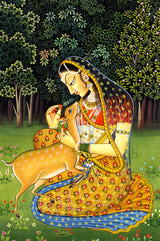
The Construction of the Sanskrit Drama
According to the code of criticism laid down in works on Sanskrit drama, it should deal principally either with the sentiment of love, or the heroic sentiment; the other sentiments should have a subsidiary position. There should be four or five principal characters, and the number of acts should vary from five to ten.
There are several species of the drama,—ten principal, and eighteen minor. Of these none has a tragic end.
Every drama opens with a prologue or, to speak more correctly, an introduction designed to prepare the way for the entrance of the dramatis personæ. The prologue commences with a prayer or benediction (Nandi) invoking the national deity in favor of the audience.
Then generally follows a dialogue between the stage-manager and one or two of the actors, which refers to the play and its author, mentions past events and present circumstances elucidating theplot, and invariably ends by adroitly introducing one of the dramatic personages, and the real performance begins.
The play thus opened, is carried forward in scenes and acts; each scene being marked by the entrance of one character and the exit of another. The stage is never left vacant till the end of an act, nor does any change of locality take place till then. The commencement of a new act is often marked, by an introductory monologue or dialoguespoken by one or more of the dramatis personæ, and is called Viskambhaka or Praveshaka, which alludes to events supposed to have occurred in the interval, and the audience are prepared for national plenty and prosperity, addressed by one of the principal personages of the drama, to the favorite deity. The development of the plot is brought about through five divisions called the five sandhis. A sandhi is a combination of incidents whereby the object is attained.
The Manner of Performance
There were no special theatres in the Hindu Middle Ages, and plays seem to have been performed in the concert-room (Sangita-Cala) of royal palaces. A curtain, divided in the middle, was a necessary part of the stage arrangement; it did not, however, separate the audience from the stage, as in the Roman theatre, but formed the back-ground of the stage. Behind the curtain was the tiring-room (nepathya), whence the actors came on the stage. When they were intended to enter hurriedly, they were directed to do so “with a toss of the curtain.” The stage scenery and decorations were of a very simple order, much being left to the imagination of the spectator, as in the Shakespearian drama. Weapons, seats, thrones, and chariots appeared on the stage; but it is highly improbable that the latter were drawn by the living animals supposed to be attached to them. There may have been some kind of ærial contrivance to represent celestial chariots.
SOURCE: Tales from the Hindu Dramatists (1911) by R. N. Dutta, B.A., B.L., Late Officiating Head-Master, Metropolitan Institution, Bowbazar Branch, Calcutta. Published by B. Banerjee & Co., 25, Cornwallis Street, and 54, College Street, Calcutta.
~By Rama Nath Dutta

